How to use iron vitriol for grapes?
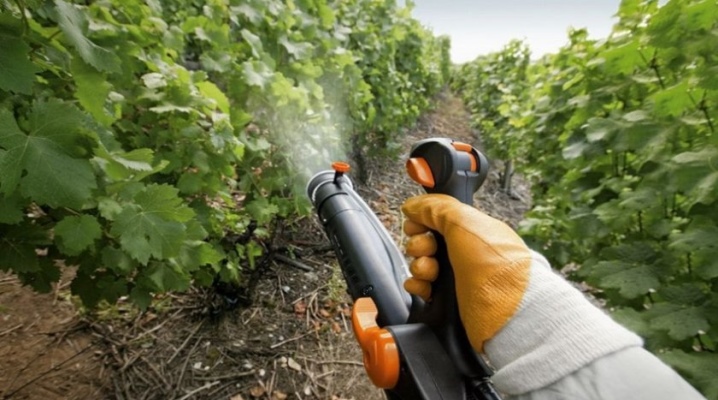
Bright, large leaves, bunches of juicy berries, healthy plants are the dream of any grower. To protect the vineyard from diseases and pests, fungicidal and insecticidal preparations are used. One of the most useful and versatile assistants in the grape business is iron vitriol, which we will discuss in more detail below.
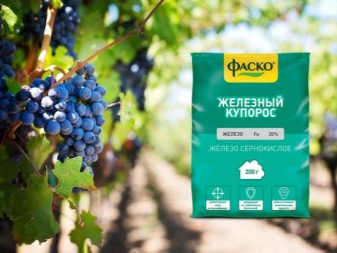
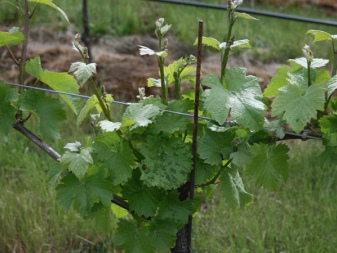
Benefit and harm
Iron sulfate or ferrous sulfate is a good choice because it can solve many of the problems that gardeners and farmers face when growing grapes. This is a non-toxic substance, and its use directly on the plant will result in the following beneficial changes:
- complete healing of the plant from diseases that insects can spread to fruit bushes;
- destruction of harmful microorganisms living on the leaves, in the bark, as well as disinfection of the soil, saturating it with the iron necessary for the development of grapes;
- ensuring the formation of chlorophyll and the efficiency of the process of photosynthesis in the leaves;
- grape clusters grow strong, many ovaries are formed;
- strengthening the vines themselves: they become elastic, the fragility of the bush is eliminated;
- detection of some diseases invisible to the eye, for example, oidium - a fungal disease that manifests itself as dark spots after treatment with iron vitriol;
- prevention of the appearance of diseases and resistance to sudden changes in temperature, which is important for thermophilic grapes both during wintering and in spring, when the shelter is removed.
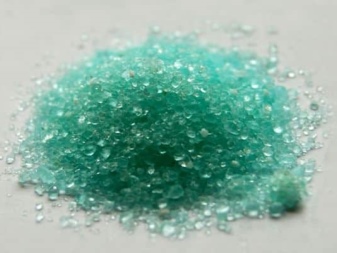

In horticulture, ferrous sulfate is used to combat not only such common ailments as spotted necrosis (characterized by drying out of vines and bush sleeves), bacterial cancer (tearing of the grape bark), anthracnose (dying off and browning of leaves, their stalks, grape bunches), but and with many other infections. Iron vitriol does not allow harmful parasites to attack grapes. Thanks to the processing of grapes with iron vitriol, the yield increases significantly, the culture grows better.
You can harm grapes with ferrous sulfate, if you do not follow the dosage, use the wrong concentration of the substance. This will lead to leaf burns.
Remember that if you use the drug, ignoring the instructions, you may not get the expected positive effect.

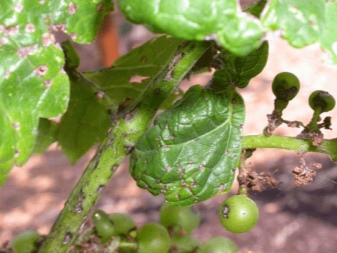
There are a few more points:
- untimely treatment with iron vitriol will not allow grape buds to open, and the fruits will not have time to ripen in time;
- the use of the substance at the same time as other chemical compounds will spoil the effect;
- if solutions are prepared in iron containers, the reaction may also be unfavorable.
Thus, in order not to harm the grapes, you need to follow the rules for using the drug, drawn up by experienced gardeners. Then ferrous sulfate will show its best properties, and the result in the form of a blooming vineyard will not be long in coming.
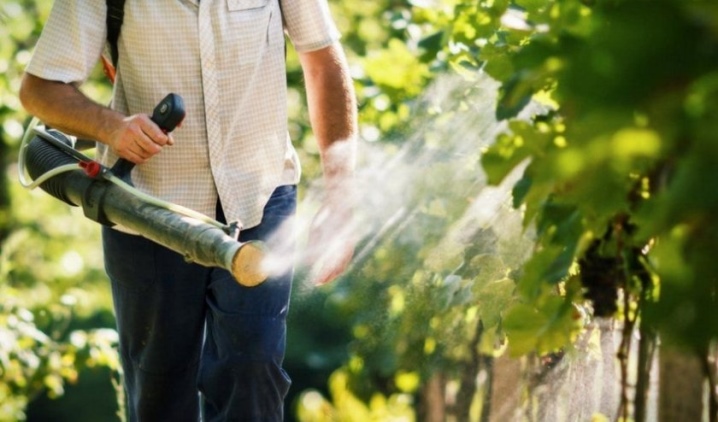
How to dilute?
A solution of ferrous sulfate is quite easy to prepare if you follow elementary rules and observe the known proportions of water and powder. The concentration of ferrous sulfate depends on the age of the plant and the purpose of the solution. So, for the treatment of young grapes, a slightly smaller dose of ferrous sulfate should be added to the solution than for an adult plant.If a healthy plant is processed for disease prevention, then the dosage should not be as large as in the treatment.
Before proceeding with the preparation of a solution that is suitable in composition, you should first take care of the selection of protective clothing so that the mixture does not accidentally get on the skin, eyes, or inside the body. Then we prepare the necessary equipment: breeding containers and a spray bottle or soft brushes with which you will apply iron sulfate to the plant.
Iron containers for breeding such a composition are not suitable; it is better to use plastic, ceramic, glass models.
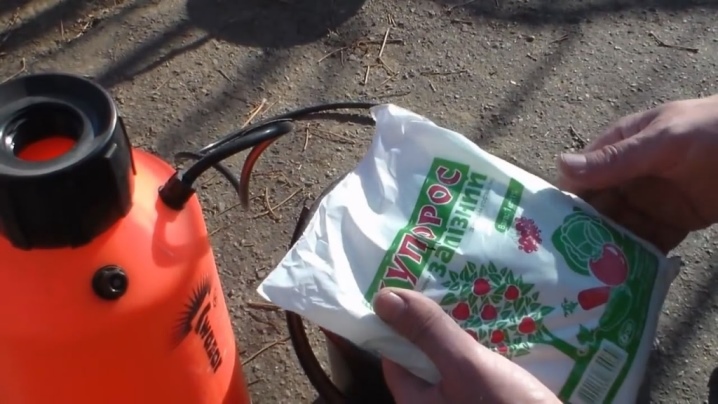
For the processing of grapes, iron sulfate solutions of 3 and 5% are used. A three percent composition is prepared as follows:
- take 10 liters of settled water;
- prepare 300 g of ferrous sulfate powder for mixing with water;
- dilute the powder with water, stir until completely dissolved.
Such ferrous sulfate is used for preventive purposes.
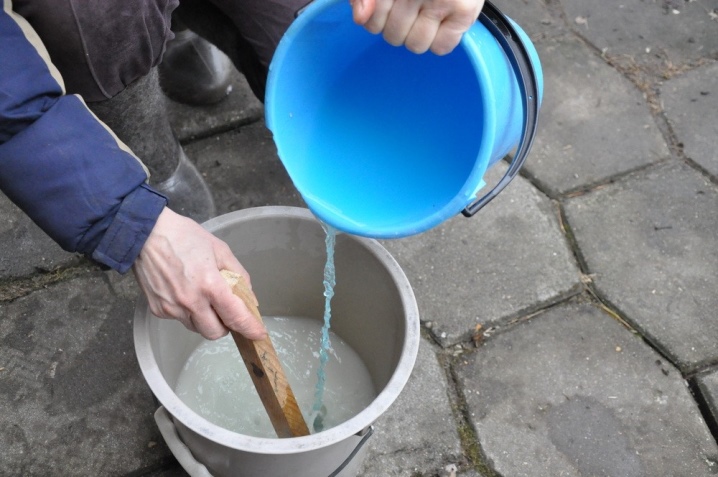
A five percent mixture is prepared according to the following scheme:
- we take 500 g of ferrous sulfate, the water consumption is the same - 10 liters;
- combine water and powder, stir thoroughly.
In the case when any disease is found in grapes, the dose of ferrous sulfate should be 5%.
Use ferrous sulfate immediately after preparation, as the mixture has a short shelf life and oxidizes quickly. If the concentration of a substance in the solution is higher than normal, it can harm the grapes.
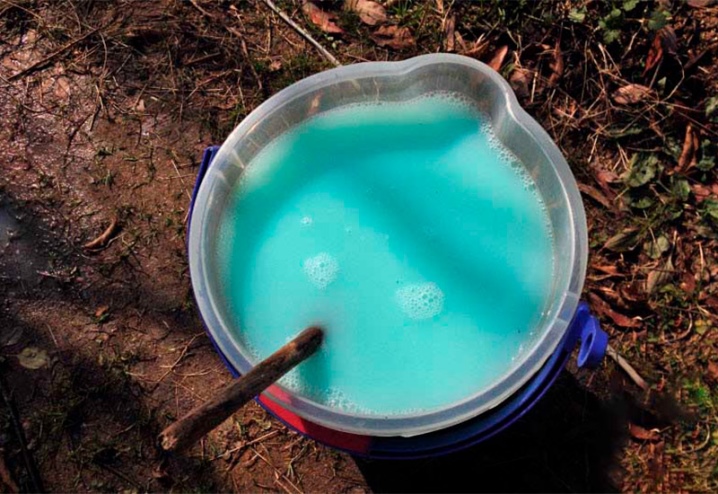
Applications
Iron sulfate with regular use will get rid of most problems with grapes. There are certain schemes that indicate the time of treatment of vineyards with ferrous sulfate.
Spraying is carried out in spring and autumn. In the spring, work is done when the buds of the grapes have swollen, but have not yet blossomed. Autumn processing should be carried out after harvest, when the leaves have fallen and the pruning has already been done. Such spraying is carried out before the shelter of the crop for the winter. Spring spraying, the timing of which falls on February-April, is necessary to exclude the possibility of disease of the vines with a fungus. In this case, the air temperature should be at least +5 degrees.
Also at this time, gardeners use iron vitriol to to protect the vines from frost with a reliable film that appears on the crop after spraying.


Late frosts damage the kidneys that are sensitive to temperature changes and reduce future grape yields. The film protects the plant for two weeks after treatment with the drug. The budding process is delayed, the grapes will not suffer from frost.
How to prepare a suitable solution, the following instructions will tell:
- take 10 liters of water and 50 g of ferrous sulfate;
- dissolve ferrous sulfate powder in liquid;
- spray the grape vine completely, as well as the ground around: it may contain pathogens.

After processing the grapes with iron sulfate, roots will appear on the side cuttings. The grapes will be resistant to weather changes. In October-November, the grapes are sprayed in front of the shelter so that it overwinters better and does not form harmful mold and rot on it. In the fall, it is important to get rid of all diseases, because with the onset of spring, a weakened plant will lose its chances of good growth. For this, the following solution of ferrous sulfate is prepared:
- 300 (for a young plant) or 500 (for an adult) grams of ferrous sulfate is taken;
- in 10 liters of water, the required amount of iron sulfate powder is diluted;
- the vine is carefully processed, especially where the affected areas were.

In the last days of autumn, grape shanks are cut and they can also be sprayed with iron vitriol. Processing such cuttings is especially important before winter storage. When the cuttings have already been cut, you need to prepare a five percent solution of ferrous sulfate and immerse the shanks in it for 5 seconds, and then dry them. This method of processing fights mold and perfectly preserves the cuttings throughout the winter and until planting.
In both spring and autumn, grapes must be processed 2 or 3 times with an interval of two weeks. The grapes are sprayed in calm and dry weather. After carrying out this work, several hours should pass without rain.
If the weather is cloudy and precipitation falls constantly, then iron sulfate is used every day.
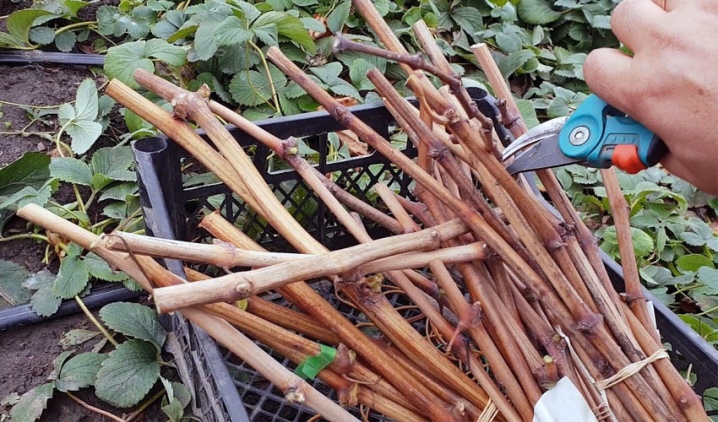
Top dressing
Ferrous sulfate is used as a soil fertilizer in order to feed grapes with minerals. Iron vitriol eliminates the lack of iron, which often manifests itself in the fall of grape leaves, slowing down the development of the plant as a whole. The shoots of the plant brighten from the tops, and then the whole bush can dry out.
But, fortunately, iron chlorosis can be easily treated, and you can do this by following these instructions:
- take 10-20 g of ferrous sulfate and 10 liters of water;
- dilute the powder in water;
- water the soil.
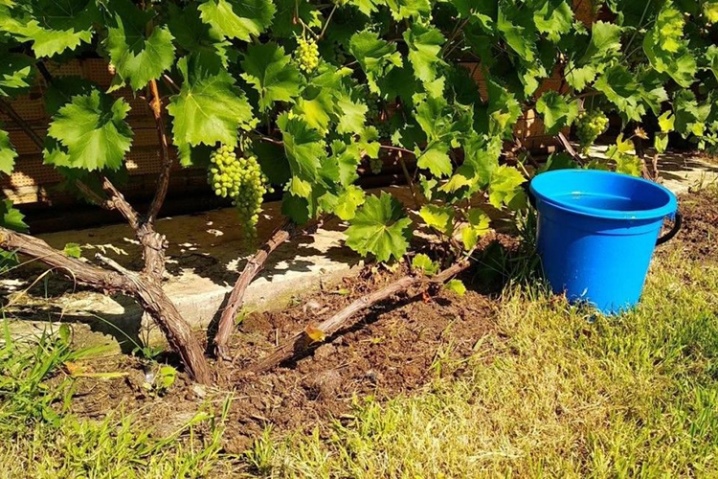
Iron vitriol is a valuable preparation because it is very easily absorbed by plants. Often the composition of the soil in which grapes grow does not allow for easy absorption of iron from it. In this case, feeding with iron sulfate comes to the rescue.
Watering grapes with iron vitriol with urea is also useful. Additionally, such a mixture can be used for insecticidal treatment (it is good in the fight against insect larvae). It is necessary to water the soil and spray the stems.
The composition of such feeding is prepared as follows:
- we make a three percent solution of ferrous sulfate (300 g per 10 liters of water);
- we take 100 g of urea;
- mix urea and ferrous sulfate solution.
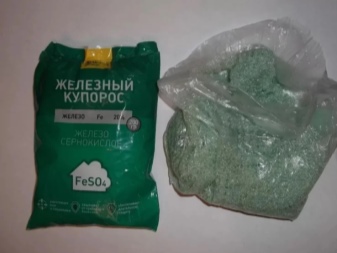

From diseases and pests
A properly prepared mixture of ferrous sulfate will cure grapes from a wide variety of disease-causing pests. The treatment will need to be carried out 5-7 times. It is necessary to apply the solution to the affected areas of the plant and water the soil around it.
Iron vitriol heals only infectious diseases of a non-bacterial nature, such as mildew (leaf tissue lightens, an easily washable fluff appears, grape shoots are exposed), gray rot (discoloration of shoots without capturing leaves, and in the future - the fall of whole inflorescences), black cancer (leaf deformation , short knot of shoots, drying of sleeves). Plants are not treated with ferrous sulfate against bacteria.
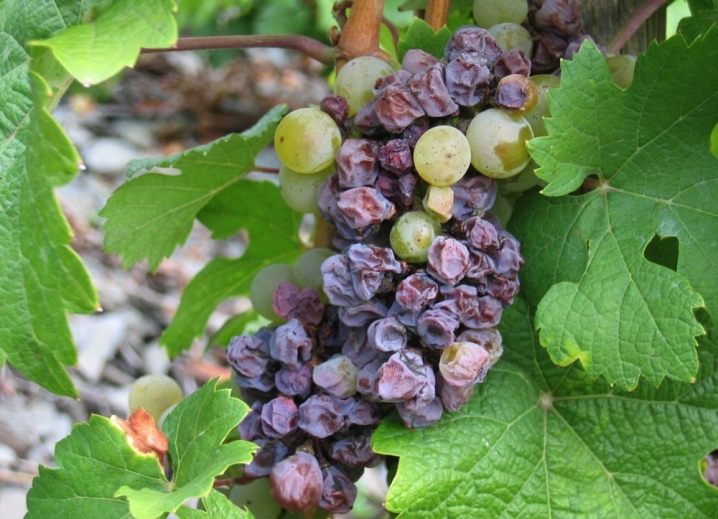
Do not spray grapes with iron sulfate during fruiting. Spraying grapes from diseases is possible after harvesting or before the ripening period of the berries. Processing of grapes affected by mildew, gray rot and powdery mildew is carried out using a concentrated composition. A four percent or five percent solution is prepared from 400-500 g of ferrous sulfate, taken in 10 liters of water.
Lichens and mosses are also unwanted objects in the vineyard. They weaken the plants they are on. If they are found on grapes, gardeners are sprayed with a three percent solution of ferrous sulfate (300 g of powder per 10 liters of water). The growths die off, and after 3 hours they can be mechanically scraped off.
When treating against moss and lichens, try not to spray the solution on the young foliage of the grapes.

Disinfection of wounds and cracks
If cracks and wounds appear on the grape vines, then there is a danger of infection of the plant with infections. Also, due to a violation of the integrity of the bark cover, the bush may break. Ferrous sulfate disinfects damaged areas and forms a film, strengthening the grapes and preventing pests from penetrating wounds. A one percent solution is used.
To prepare the mixture, take 100 g of ferrous sulfate powder and 10 liters of water. Dissolve the powder in water and process the culture with it. Make sure it's not going to rain. Otherwise, repeat the treatment every day. And in order to properly handle cracks and wounds on the grapes, you need a soft brush.
The same composition is used to treat hollows on the culture and whitewash the trunks.
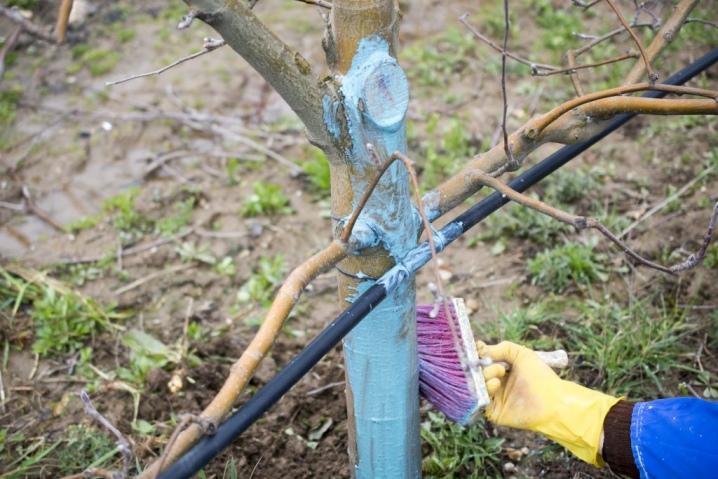
Security measures
To safely process grapes, follow certain rules.
- When working, use personal protective equipment (gloves, respirator, etc.) so as not to accidentally burn the skin with the solution.
- Strictly observe the dosage of the substance, because a very high concentration can burn the grapes, and they will die. Instead of a medicinal product, the solution may turn out to be poison.
- In the summer, apply the substance only to painful areas of the vine.
- After work using ferrous sulfate, other preparations and organophosphorus compounds can be used only after two weeks.
- Store ferrous sulfate in hard-to-reach places, away from small children and animals. When cultivating a vineyard, limit the movement of family members through it.
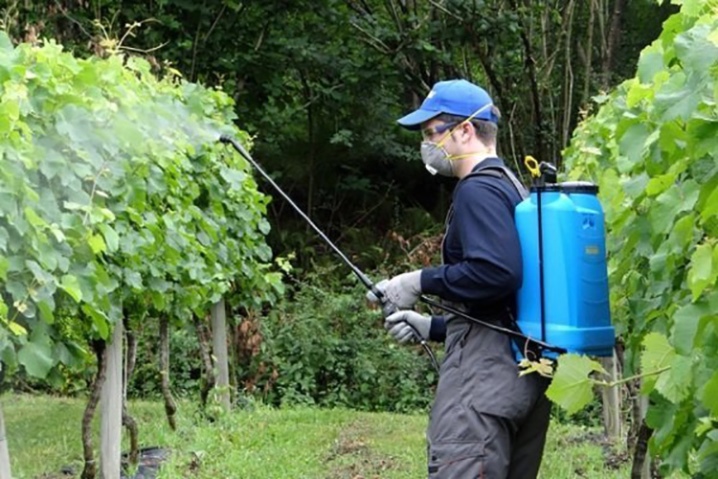
Frequent mistakes
Failure to follow instructions for use and safety rules is the most common mistake in processing grapes with iron sulfate. But there are other nuances as well.
- It often happens that ferrous sulfate is mixed with lime or alkalis. Do not use other drugs together with iron sulfate. It is allowed to mix ferrous sulfate only with citric acid, urea.
- Too low a concentration of a substance will not bring the desired result. To combat mineral starvation, pests and infections, use the dosage indicated in the instructions.
- Treating bacterial infections with iron sulfate will not work.
- Do not forget about the timing and sequence of processing. By following the patterns, you are protecting the grapes.
Grape growth and high yields are achieved with the right care and careful cultivation.
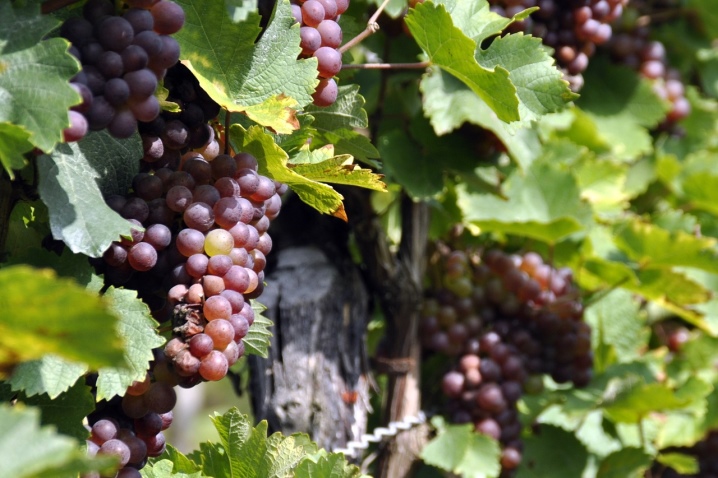
For information on how grapes are processed with iron vitriol, see the next video.













The comment was sent successfully.